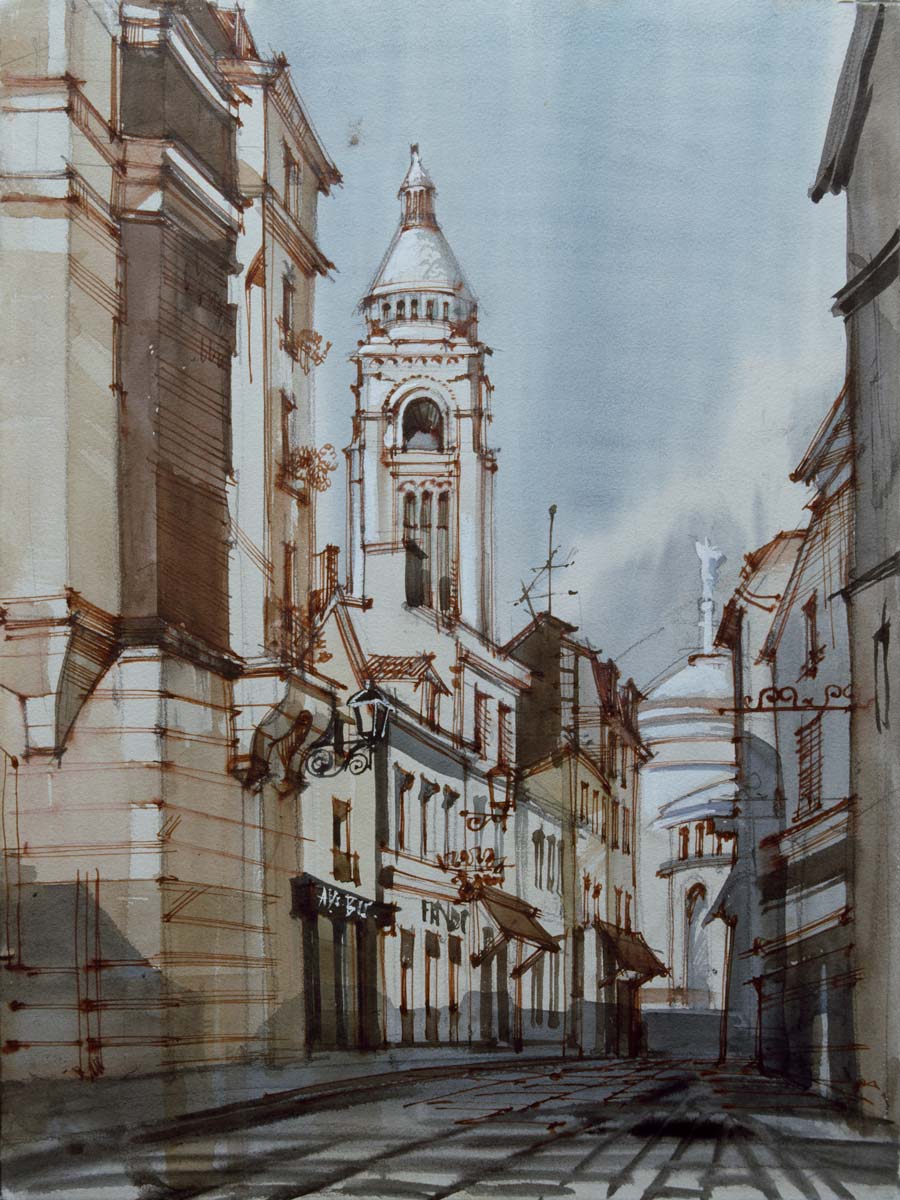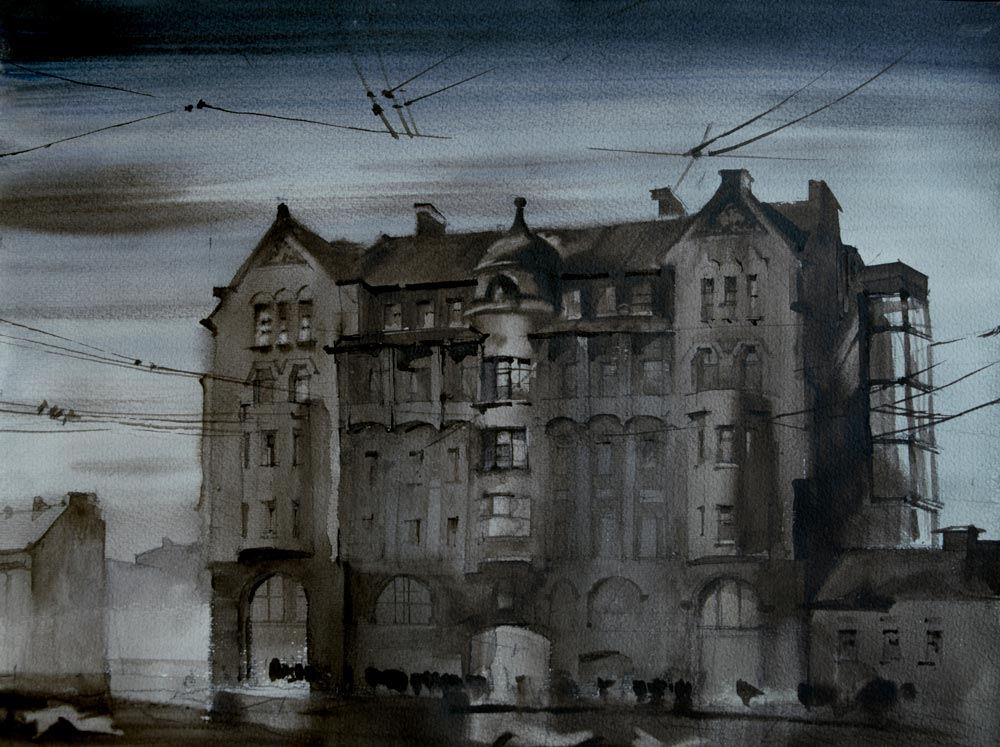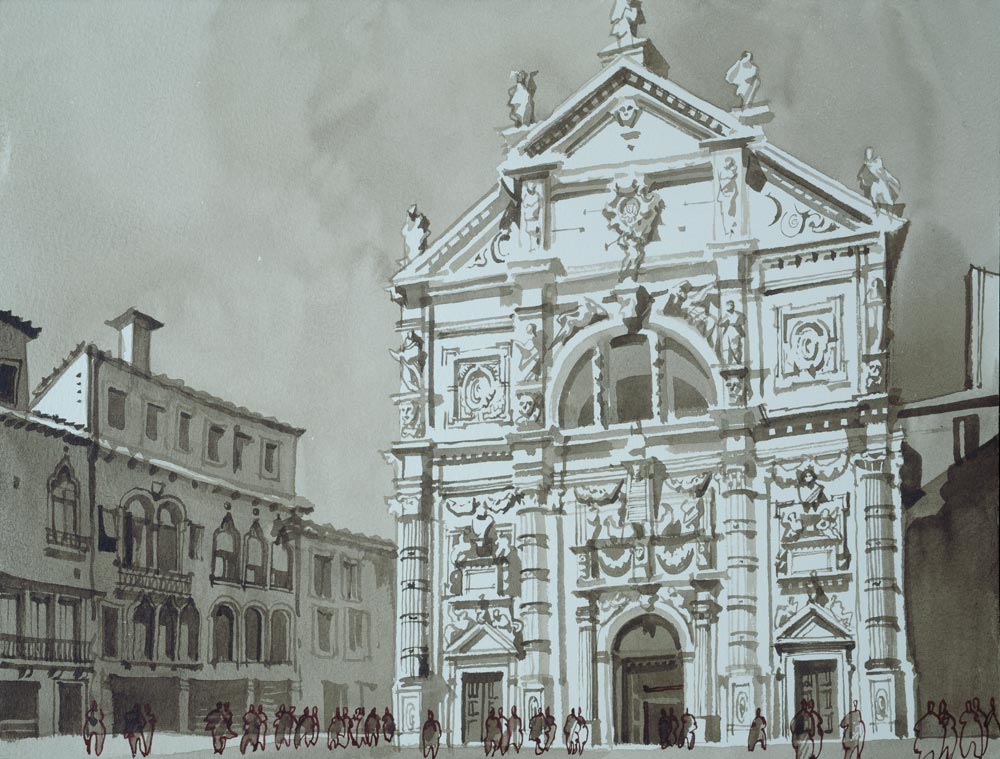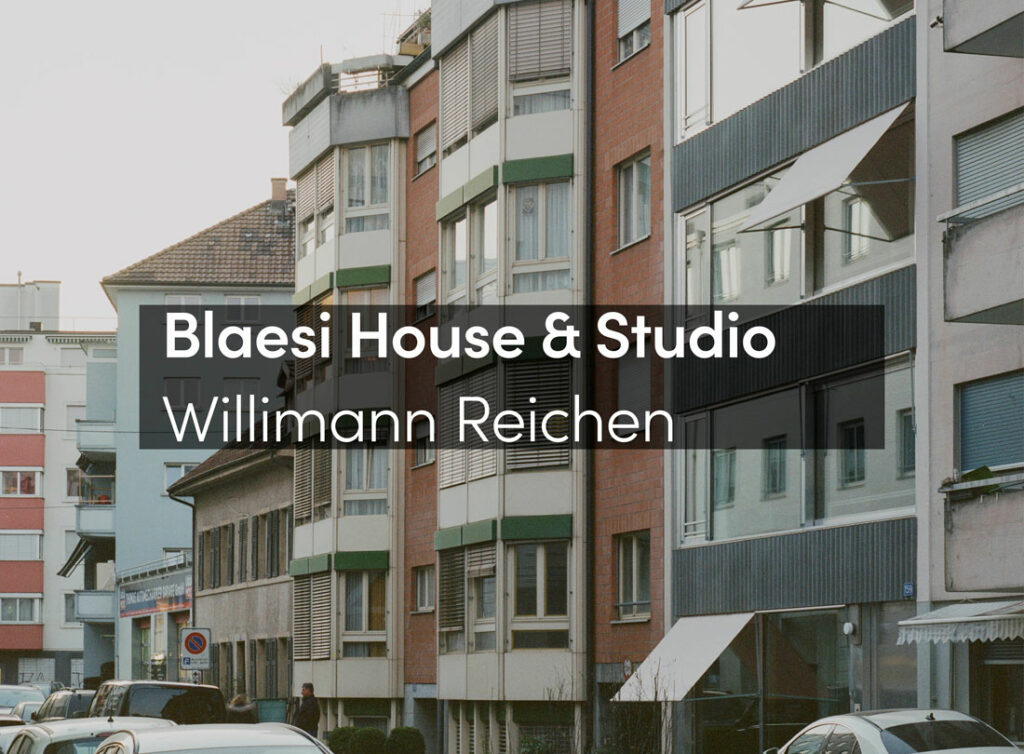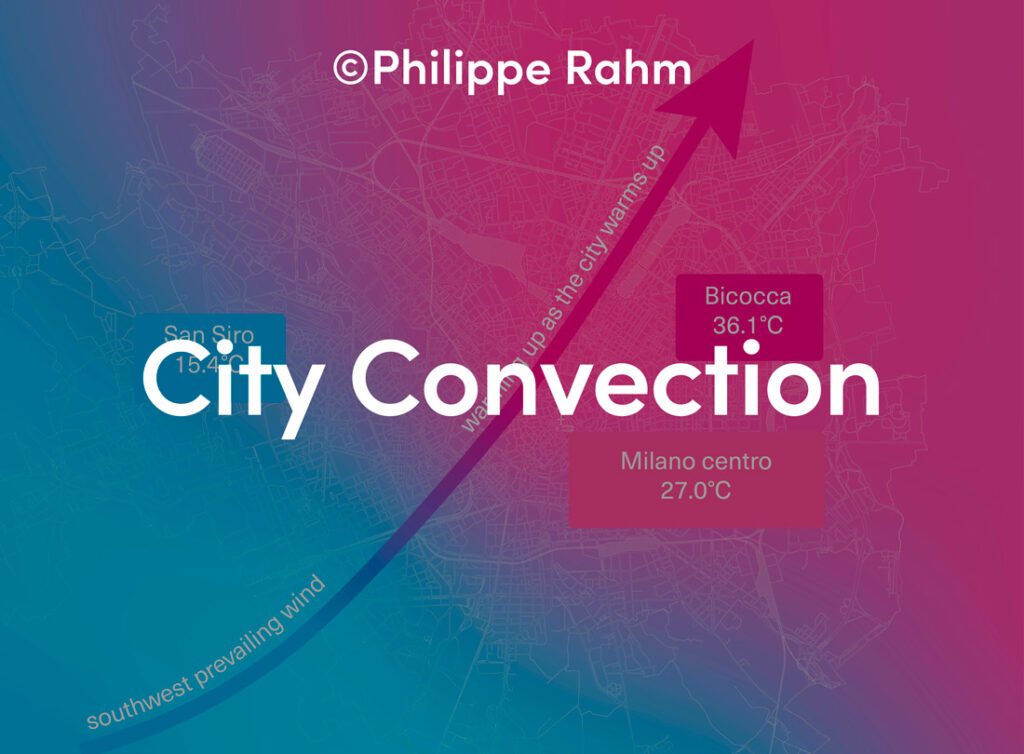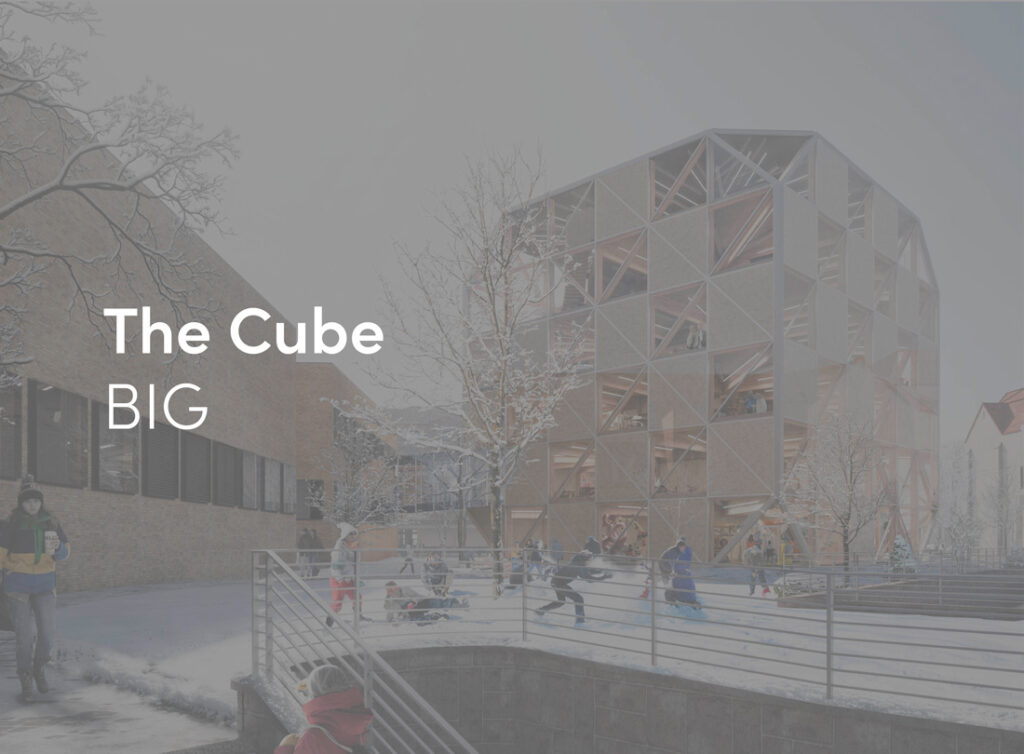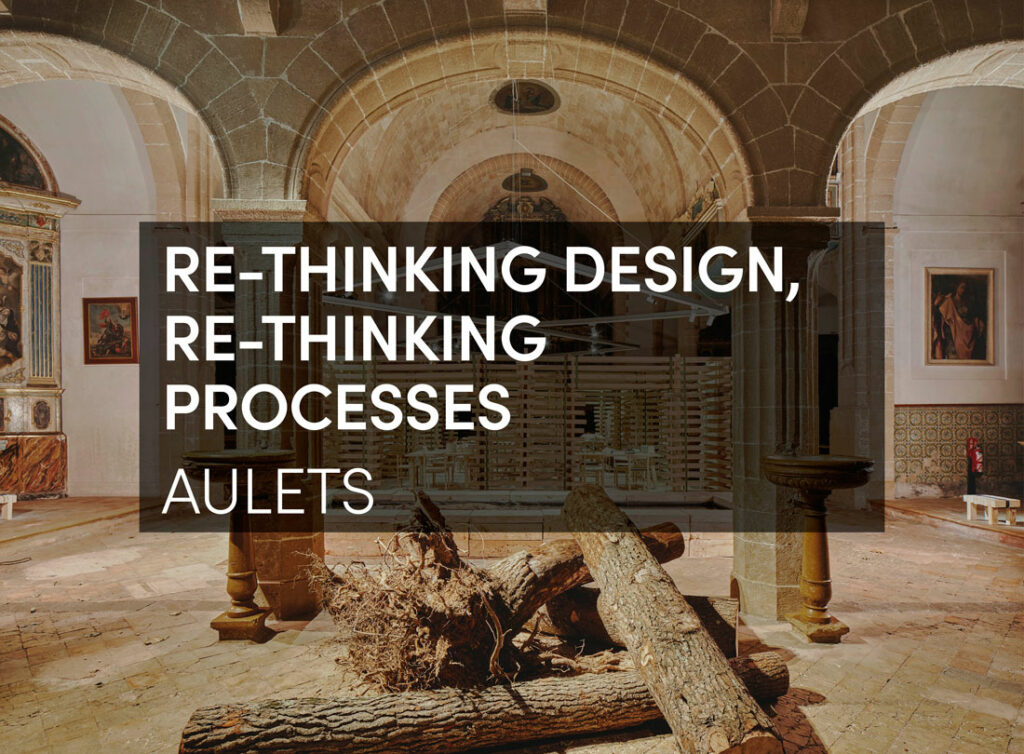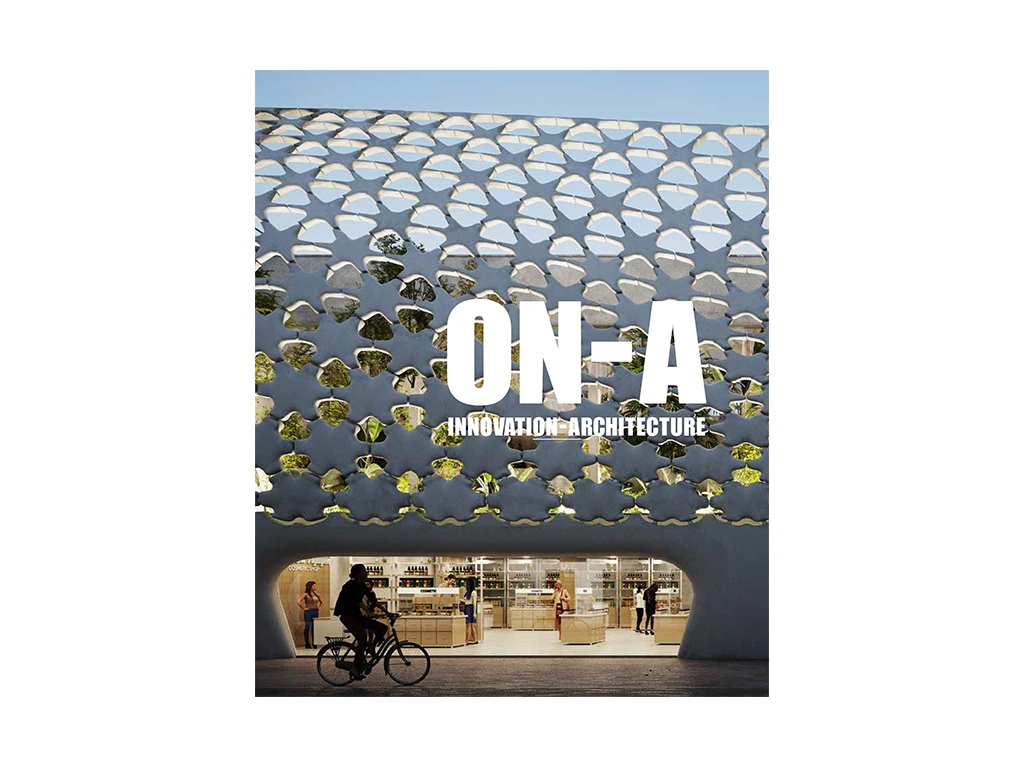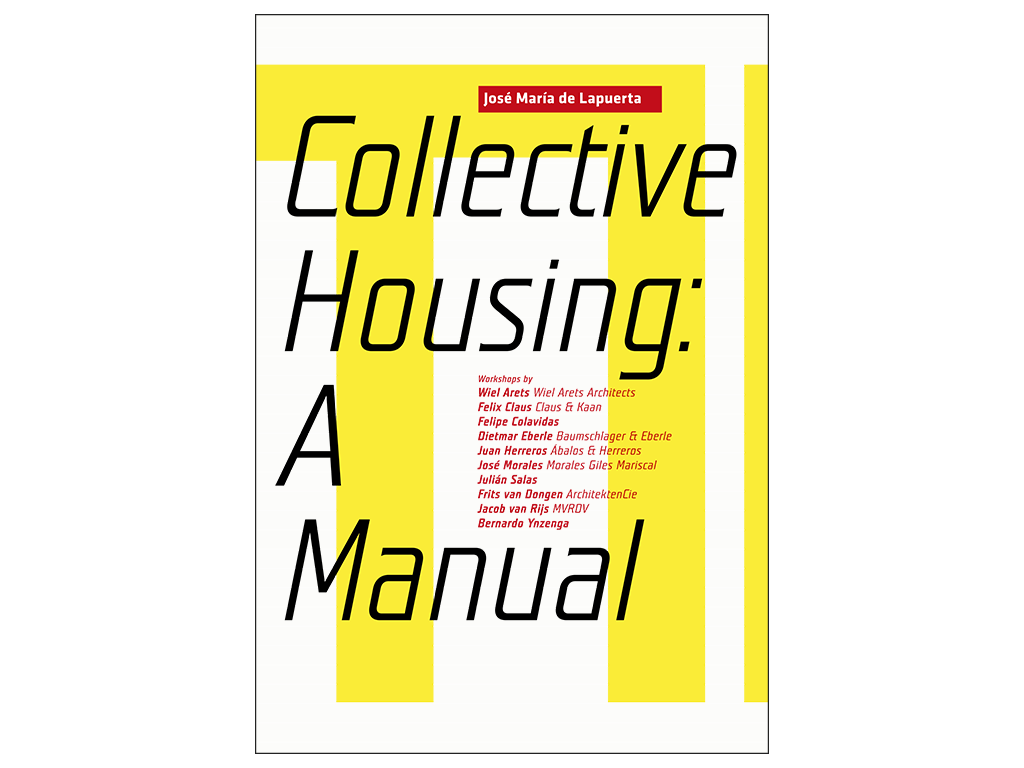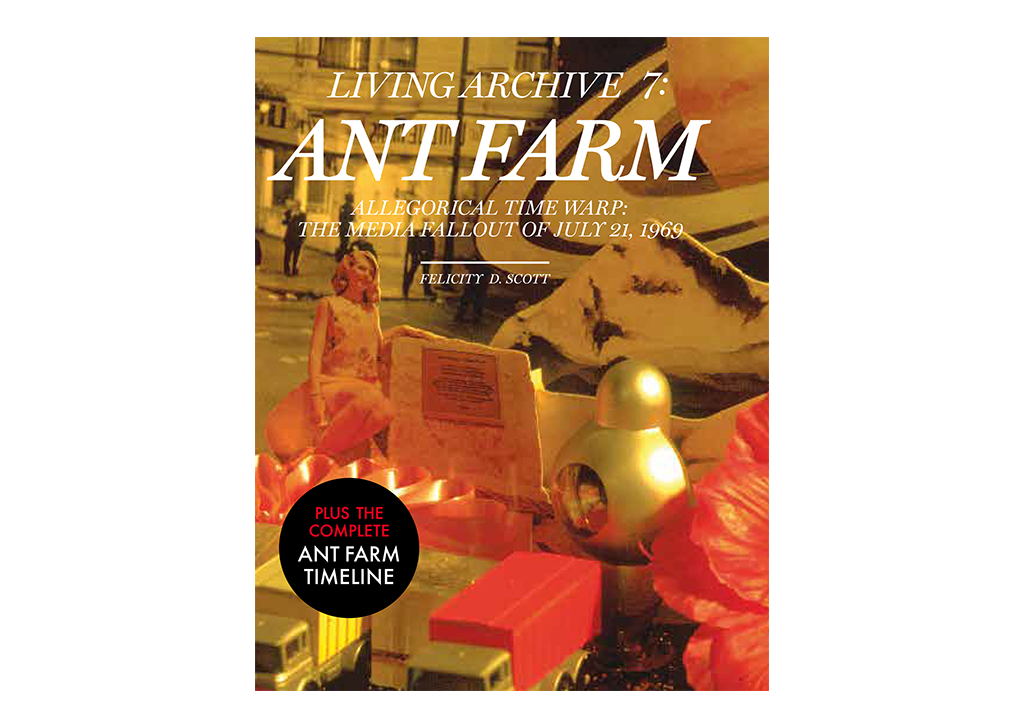Some readers may ask themselves what it was that inspired us to write this book. After all, there are countless monographs on architectural history and individual architects. When architects wish to introduce themselves to a client, they no longer scramble to put together a folder of photocopies of their projects and buildings. Instead, they routinely just lay a book on the table – a photo album of the buildings they have realised produced by a prestigious publishing house. Piles of books like this, shedding light on the development of architecture, right down to the tiniest minutiae, come out every year. This book, however, has a rather different focus.
Paris, 1990, Indian ink, watercolour, 400×300 mm
To a large extent, it is a personal and at the same time studiedly objective examination of a single question: What does contemporary architecture mean for today’s culture? Over the last 100 years, architecture has undergone a radical overhaul, relinquishing many of the design tools it had once had at its disposal. At the same time it gained a great deal, most importantly through the rapid development of technology. The design principles of today’s architecture are very different from those of a century ago. But what is it that has changed? Do ‘laypeople’, not to mention architects, understand the causes and implications of this change? I have been unable to find an answer to this question in books, interviews with my peers, or in the discussions about architecture that I follow closely and in which I make an effort to participate. As a result of this, I have ventured to invite an architectural historian and journalist from my native Russia, Vladimir Sedov, a man I greatly admire, to co-author this book with me. In our examination of the history of architecture and the decisive turn it took in the 1920s, we will cultivate a degree of detachment, adopting the role of observers who attempt to delineate a phenomenon that already exists and is evident to everyone, even if it has yet to fully penetrate our consciousness. We will also venture to offer a prognosis, outlining the qualities contemporary architecture must focus upon if the undisputed aesthetic achievements in twentieth- and twenty-first-century architecture are not to be forgotten.
A house at Vladimirskaya square in St. Petersburg, 1989, watercolour, paper, 350×450 mm
As tourists, we find ourselves most drawn to historical cities with their wealth of buildings, including works of intoxicating beauty that make up what we like to call the ‘background architecture’, some of it erected by nameless builders from a bygone age. What are the prerequisites for creating exciting urban ensembles in which the latest technological and aesthetic successes and the key achievements of the twentieth century’s great architectural revolution are not merely epitomised by outstanding individual artworks but in which the majority of the buildings that surround them are able to match the quality we find in historical cities?
Venice. Campo San Moise, 2009, Indian ink, watercolour, 230×305 mm
I enjoy travelling to these cities together with architectural laypeople. When I travel together with an architect, I can already predict my own reaction to a building, as well as that of my colleague, before we even see it. Up until, say, the 1910s, historical architecture was seen as a series of more or less interesting iconographic buildings. These buildings now seem like the remains of a lost civilisation: they leave such a deep impression that we often don’t even know how, by whom and, most importantly, why they were built in the way they were. I always have the feeling that these artefacts were built by aliens with highly developed detailing technologies, who simply left the planet after completing their work without teaching us any of their unique knowledge, so that we can neither use it nor develop it further. When they observe buildings from the 1920s and 1930s or from the 1950s and 1960s, architects particularly like to admire the minimalist architectural language and the unusual, often brutal forms of these relatively new works of pre- and post-war modernism – many of them already in a dilapidated state – whose maintenance requires visible effort. When it comes to contemporary architecture, we often only see the new in the true sense of the word, meaning the buildings are only interesting because they are novel – rather like an internet newsfeed. The architecture of twenty years ago receives almost no attention at all, for in the meantime the building technologies and fashions have changed completely. Often the only thing that impresses us about the latest buildings is the interplay of material and form: their highly precise joints and connections executed using state-of-the-art technologies.
Venice. View of the island San Pietro di Castello, 2012, Sepia, watercolour, 370×535 mm
The overabundance of awards, exhibitions, and publications suggests that the general public is obliged to like architecture simply because its creators appreciate it. In reality, however, laypeople view and experience their cities in a completely different fashion. I love to talk about architecture with a non-architect, while driving along the Champs-Élysées, for example, or walking around Berlin. Even the most mediocre buildings erected before the 1920s are a delight, or at least enough to initiate a discussion, thanks to their richly decorated facades. However, when asked about buildings dating from the period since the 1950s, my interlocutors are often puzzled: ‘Is that supposed to be architecture? What am I meant to like about that?’ Only the most unusual and well-known contemporary buildings can make a case for themselves. Generally speaking, these building stand out not merely because of their materiality, be it concrete, brick, or glass, but because of their actual design. Other contemporary buildings have little chance of impressing anyone outside the architectural profession. It would seem that today’s outstanding buildings require a detailed architectonic background – best made up of old buildings – if they are to achieve the desired contrast to their surroundings, much in the same way that the finely detailed surface of a wood fungus stands out against the picturesque backdrop of a rotten tree trunk.
Ghent, 2013, watercolour, Sepia, watercolour paper, stretched over a frame, 500×700 mm
I studied architecture in Saint Petersburg, a city with an extremely dominant historical atmosphere and collection of old buildings. It is important to note, however, that this historic urban landscape is only a little more than 300 years old and yet its builders live on as heroes and titans in the city’s collective consciousness.
Architectural constrasts 4. A street, 2015, charcoal, paper, 593×420 mm
At my university, courses in architectural history had absolutely no connection to modern architecture. As I vividly recall, it never occurred to me to consider whether it would be possible to create something as beautiful and finely detailed as the surrounding historical building stock. Our university was located in a beautiful eighteenth-century building, the very first classical building in Saint Petersburg. Every day we entered its imposing entrance hall with its two opposing stairways before making our way to the classroom in order to design yet another shack with posts and beams. Even when I was at home with my family, I would often hear someone say: ‘Well … it’s not possible to build like they did in the past, but you have to try and make the best of things in our current situation.’ We completed our studies and sketches on the streets and in the buildings of Saint Petersburg’s historic districts. We thought the subjects of our sketches were like the remains of a lost civilisation left behind by aliens who had come from who knows where and disappeared to places unknown with no indication that they would ever return. Let me repeat: none of us, and, even more importantly, none of our instructors thought it was important to create something as beautiful – and I stand by the term ‘beauty’ – as the buildings that surrounded us each and every day. Nowadays this word is almost never used to describe architecture. It is virtually forbidden. We were unable to travel abroad, but the university library acquired books and magazines from abroad. We were astonished to see that the world was moving not only in the direction of simplified forms and the renunciation of detail but was also developing new technologies that made it possible to build new forms and unusual geometries.
Hong Kong, 2016, pastel, paper, 597×402 mm
When I came to Western Europe 25 years ago and attempted to develop my architecture career as best I could, I was surprised to discover that the questions that had preoccupied me as a student still remained unanswered. If anything, many of the problems had actually become more acute. The intuitive aversion of many urban residents towards their immediate, newly constructed reality had, in my opinion, unfortunately only hardened. And it is precisely these questions that we wish to address in this book by examining the history of architecture without getting lost in all of its details. When compared with past eras, what is it that contemporary architecture has forfeited? What has it gained? What urban landscapes can we develop when we realise that historical environments often no longer exist as a dependable backdrop for experiments with form and contrast?
The modernist urban landscape 1, 2016, red chalk, charcoal, paper, 510×665 mm
What is important is that we want to make this book interesting and accessible for non-architects. Of course, we would be pleased if our architect peers find something useful in its pages. Indeed, we would welcome it. But our target audience is the architecture aficionado. We hope that you, dear reader, can gain an overview of architectural history without having to wade through pages and pages of facts, dates, and technical terms. In around 100 pages you will gain a preliminary insight into the world of architecture and can then, if you so wish, use what you have acquired to delve into the professional literature and expand your knowledge of architectural history. But our greatest wish is that we bring our readers a step closer to answering the following question: ‘What are we searching for and what are we missing in contemporary architecture and the modern city?’
